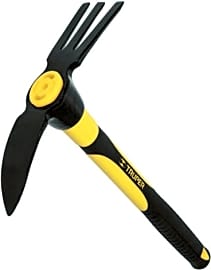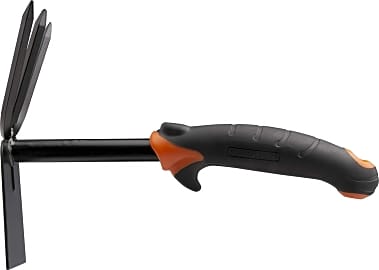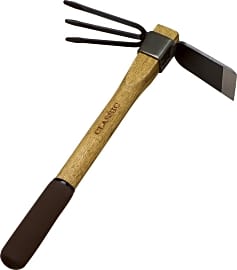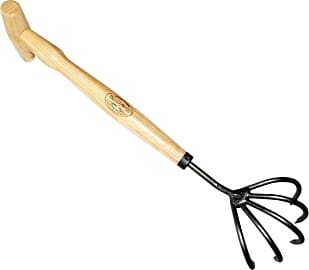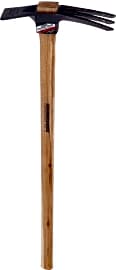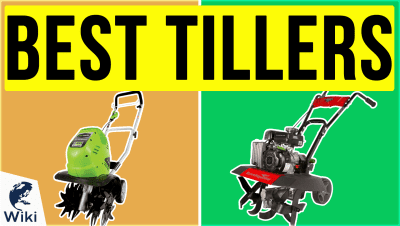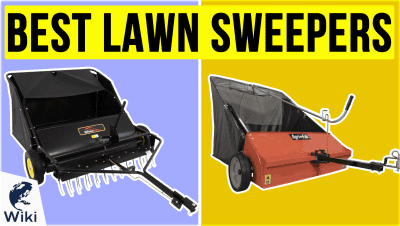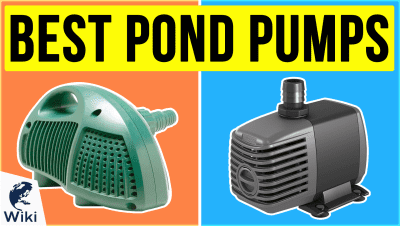The 10 Best Hand Tillers

This wiki has been updated 43 times since it was first published in March of 2015. While large-scale agricultural and landscaping projects may call for powered machines to break up soil and prepare it for planting, if you've only got a small flower or vegetable garden, then one of these hand tillers will be sufficient for the job. Our selection includes options for those who prefer to work standing up as well as people who are happy to get on their knees in the dirt. When users buy our independently chosen editorial picks, we may earn commissions to help fund the Wiki.
Editor's Notes
March 25, 2020:
For this update, we removed the Garden Growers Supply Broadfork because of availability issues and added two compact tools for people looking for less heavy-duty options.
The DeWit Cultivator is a lightweight, handheld model for use on shallow tilling projects 3-4 inches deep. Its price is a little steeper than other options, but its super-durable construction and unique ash handle make it a great choice for a gardener with lots of ground to cover.
The Black+Decker BD1540 is also on the small side, but with a much different design, featuring tines on one side, and a flat blade on the other for chopping through roots and dense soil. We added this option for people who want the versatility of two heads, but prefer a lighter tool. This type of two-headed tiller is best suited for depths of 7-10 inches.
Larger tillers, like the Yard Butler TNT4 Garden Twist, and Treadlite Broadfork are great for bigger projects that smaller tools wouldn't be able to handle.
If you feel like you need more power than these manual tools can provide, perhaps a power tiller is what you need? These machines require users to observe extreme safety measures, but if your job is big enough they can save you a lot of time and effort.
Turning The Soil: The Hand Tiller
Some hand tillers turn only a few square inches of soil at a time, while others can be used to aerate a square foot or so with each exertion.
In order to produce the most vibrant, verdant lawn, soil must be tilled before it is seeded or overlaid with sod. So too must a garden or field be tilled to ensure a robust yield of flowers, fruits, or vegetables. We shall discuss why tilling is important for landscaping, gardening, and agriculture below. For now, we are going to examine one of the most basic yet important tools a farmer, gardener, or landscaper has at their disposal: the hand tiller.
A hand tiller allows its user to turn, blend, and aerate soil with ease, albeit on a smaller scale than one enjoys when using a mechanized device. The small footprint of a hand tiller is not a drawback, however, but a benefit. These tools allow for unparalleled precision; using a hand tiller, a gardener can work the soil mere inches from the roots of a tender young plant, aerate narrow patches of grass like those between a sidewalk and street, and even prepare material housed in frangible containers such as terra-cotta planters.
In short, while a hand tiller may not be the right tool for a farmer to use in preparing a ten-hectare plot prior to planting peppers, it is the perfect tool for the gardener who wants to breathe new life into a small patch of lawn or reap plentiful returns from a residential herb and vegetable garden.
When choosing the right hand tiller, first consider the amount of land you want to service. Some hand tillers turn only a few square inches of soil at a time, while others can be used to aerate a square foot or so with each exertion.
Next, consider the method of operation that best suits your needs and your physical health. A hand tiller that uses a foot plate requires relatively little physical strength, as gravity and your own body weight conspire to press the tines home into the earth. Others use a large handle (usually designed to be held with both hands at once) and a twisting motion, which requires a bit more effort but which also breaks up soil and loosens weeds with aplomb. Still other tillers operate much like pickaxes -- indeed many have both a pick-style head and tines -- and require a decent amount of physical strength and mobility for proper use, but can also break apart tougher, drier soil, and can hack through old weeds and roots, or even lift stones.
Once you have considered the size and soil condition of the plot you will till and you have assessed your physical abilities, it should be easy to choose the right tiller for the job.
Why Tilling Matters
There are multiple reasons why it is important that you till the soil of your lawn, garden, or planting fields. One of the most obvious improvements tilling offers to land is to break up large, dense dirt clods that might otherwise preclude proper root growth. A thick chunk of dirt might stop a root from growing deeply enough to find sufficient water and/or to anchor its plant; tilling the soil helps break earth into smaller bits plants can use more productively.
Tilling can destroy insect eggs, larvae, and adults, preventing them from eating the roots, fruits, or leaves of your plants.
Tilling also helps to break up and kill off weeds that compete for water and nutrients and that might otherwise strangle your chosen vegetation. As most weeds grow only shallow root structures, tilling can often eradicate these invaders completely.
When you till the earth, you also disturb or kill many of the harmful insects that can damage or destroy plants. Tilling can destroy insect eggs, larvae, and adults, preventing them from eating the roots, fruits, or leaves of your plants. It is a much safer and more eco-friendly approach than using insecticides, which may have both health and environmental impacts. And if you do use any products, including insecticides, fertilizers, and so forth, tilling helps to mix them into the soil, ensuring they will not be overly-concentrated.
Finally, tilling helps land absorb water more evenly and helps prevent erosion caused by wind or runoff (or by both). When the surface of the soil is properly tilled, it tends to be moist and rough, which helps hold soil in place. Untilled land dries out quickly, and can have its top layers blown away by the breeze or carried downhill by heavy rains or excessive irrigation.
Other Ways To Help The Soil
One of the best things you can do to ensure soil is healthy -- that is to say fertile -- is to leave it alone as much as possible. The age-old system of letting a field lie fallow for at least one growing season out of three was the standard approach to land management for hundreds of years, and it is every bit as effective today as it was for the lands of a feudal lord of the Middle Ages. When land is left to lie fallow as part of a planned crop rotation, it regains the nutrients and balance (nitrogen and carbon levels, e.g.) that allow it to produce plentiful vegetation in the future.
When planning out a garden or field for cultivation, don't overlook the importance of good drainage.
If you are prevented from resting your garden, yard, or fields by the constraints of time, space, or other issues, you can improve the fecundity of the soil in other ways. For the small-scale gardener, the best way to renew soil is to blend in compost. When you mix one part compost to three or four parts soil, even seemingly exhausted ground can prove a viable plot once again. Organic compost (especially that which you make yourself) is generally a better approach to restoring soil than adding fertilizers, as many fertilizers are so concentrated and potent that they can damage tender plants, doing more harm than good. The amateur horticulturalist in particular should turn to compost over chemicals to avoid the risk of burning a plant through excess application of fertilizer.
When planning out a garden or field for cultivation, don't overlook the importance of good drainage. While all plants need water, a glut of H2O can kill a plant just the same as a dearth. Take the time to create furrows, whether they run for acres or mere feet, as these ridges allow excess water to run away from roots that might otherwise become water-logged. A basic planter box is a great choice for small-scale gardening, especially in areas prone to heavy rainfall.


